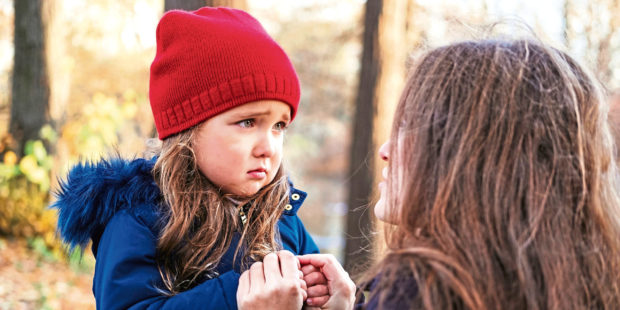
Whether they overhear the news or succumb to playground chatter, it’s near impossible to keep your young children from hearing about coronavirus.
For children, fact and fiction can easily blend.
“The younger the child, the more difficult it will be for them to understand the coronavirus,” says child psychologist Dr Michele C McDowell.
“This is for a number of reasons. Children particularly below the age of 11 are at a critical age for developing their emotional intelligence.
“During this age range, they are developing the skills of emotional regulation, progressing from black and white thinking – for example, something’s either wrong or right – to developing an understanding of emotional nuances and the knowledge that how they feel impacts on the interpretation of a situation.
“During this stage of development, children are learning to regulate their emotions. This is why we often find that younger children can experience extreme emotions, feeling happy one minute and anger or frustration the next. They are learning to regulate and understand emotions during each interaction.”
So hearing about deaths, or new cases, can make kids feel confused and anxious.
Telling them things are fine and shielding them from the truth can actually be more harmful than some honest answers, experts agree.
“If your children raise the topic, give some time to explore what they’ve heard about coronavirus,” says McDowell.
“Please don’t just respond with a ‘don’t worry, it’ll be fine’.
“Children will hear information from a range of places, such as their friends, playground, news, social media.
“Parents should aim to provide age-appropriate information, such as ‘it’s true there’s a nasty bug around that’s a bit like flu, and is making people feel unwell – and yes, some people have died’,” says McDowell.
“Align it with topics they already know about, like a cold or flu, but also say this is a little different because it is new.
“Check they understand by asking them to tell you back in their own words.”
Today, they might ask about handwashing, tomorrow it could be whether they are at risk.
“Let them know they can talk about it again and as many times as they like,” advises McDowell. “Use it as an emotional learning opportunity, by talking about feelings and emotions that come up, such as sadness and worry.”
“It’s important to model a non-panicked response and give information in a matter-of-fact way,” says Dr Elena Touroni, a consultant psychologist and co-founder of The Chelsea Psychology Clinic.
“Begin by saying that viruses have always been around. A lot of people every year suffer from the flu, and, whilst it’s important to take precautions – such as washing hands – this isn’t something that is likely to harm them.”
Being honest with a child who wants to talk about deaths they’ve heard of depends on the age of the child and their own nature, adds Touroni. Be aware if it could cause them anxiety.
“It’s hard for younger children to understand nuances, so I would refrain from mentioning death. Likewise, if a child is older and prone to anxiety, it’s important not to instil any further sense of fear.
“If you do decide to tell them, then qualify it with the fact that it’s only likely to end in fatality if a person is already unwell.”

Enjoy the convenience of having The Sunday Post delivered as a digital ePaper straight to your smartphone, tablet or computer.
Subscribe for only £5.49 a month and enjoy all the benefits of the printed paper as a digital replica.
Subscribe